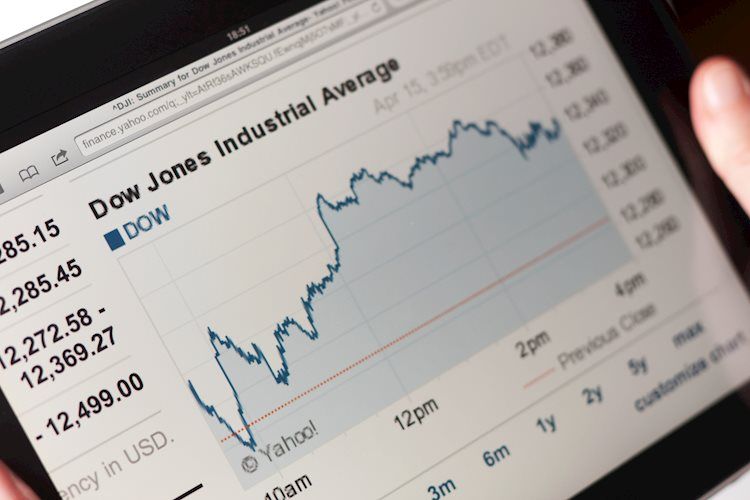The Dow Jones Industrial Average (DJIA) saw a significant increase of 1.7% in a single day, setting a new record high for the second consecutive day. This surge was fueled by hopes of a September rate cut from the Federal Reserve (Fed) following the release of US Retail Sales data that showed a flat growth of 0.0% in June. This disappointing data led investors to believe that the US economy is softening, leading to expectations of an imminent rate cut by the Fed.
Market sentiment was further boosted by the CME’s FedWatch Tool, which indicated that rate markets have fully priced in a rate cut for September, with almost 100% odds of at least a quarter-point reduction at the upcoming Federal Open Market Committee (FOMC) meeting. The FOMC is expected to hold rates steady at its meeting on July 31, as policymakers await more data to confirm a decrease in inflation before making any changes.
The Dow Jones surged over 680 points on Tuesday, reaching a peak above 40,900.00 and closing in on the coveted 41,000.00 mark. This rally was also supported by strong performances from companies like Unitedhealth Group Inc. (UNH), which saw a rise of 5.55% in its share price after reporting better-than-expected earnings in Q2. While most of the Dow Jones components were in the green, tech stocks and AI-adjacents experienced slight losses as the market shifted its focus towards expectations of a rate cut.
In terms of technical analysis, the Dow Jones experienced record intraday highs for two consecutive days, with resistance levels dissipating as buyers continued to drive the index upwards. The index has gained over 4% in the past five trading days and is on track to challenge the 41,000.00 level in the near future. Overall, the Dow Jones is showcasing one of its best single-day performances in 2024, highlighting the bullish sentiment prevailing in the market.
One of the key economic indicators that impacted the market sentiment was the Retail Sales data, which is released monthly by the US Census Bureau. This data measures the total value of receipts from retail and food stores in the US and reflects the rate of changes in sales on a monthly basis. A high reading of the Retail Sales data is generally considered bullish for the US Dollar (USD), while a low reading is deemed bearish. The recent flat growth of 0.0% in June indicated a slowdown in consumer spending, further fueling expectations of a rate cut by the Fed.
In conclusion, the Dow Jones’ impressive rally to record highs was driven by market optimism surrounding a potential rate cut in September following disappointing Retail Sales data. With the FedWatch Tool signaling high odds of a rate reduction and strong performances from key companies, the Dow Jones is on a trajectory to challenge the 41,000.00 level. Investors will be closely monitoring upcoming economic data releases and the Federal Reserve’s decisions for further insights into market movements.











